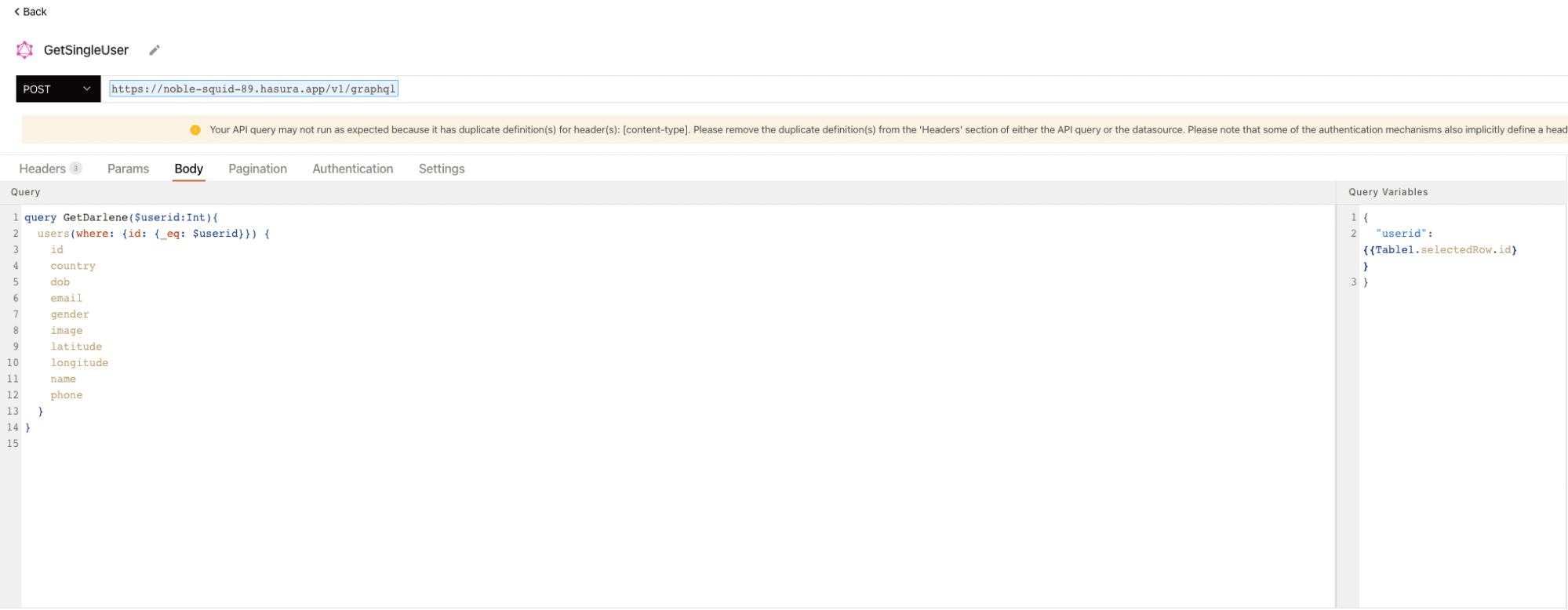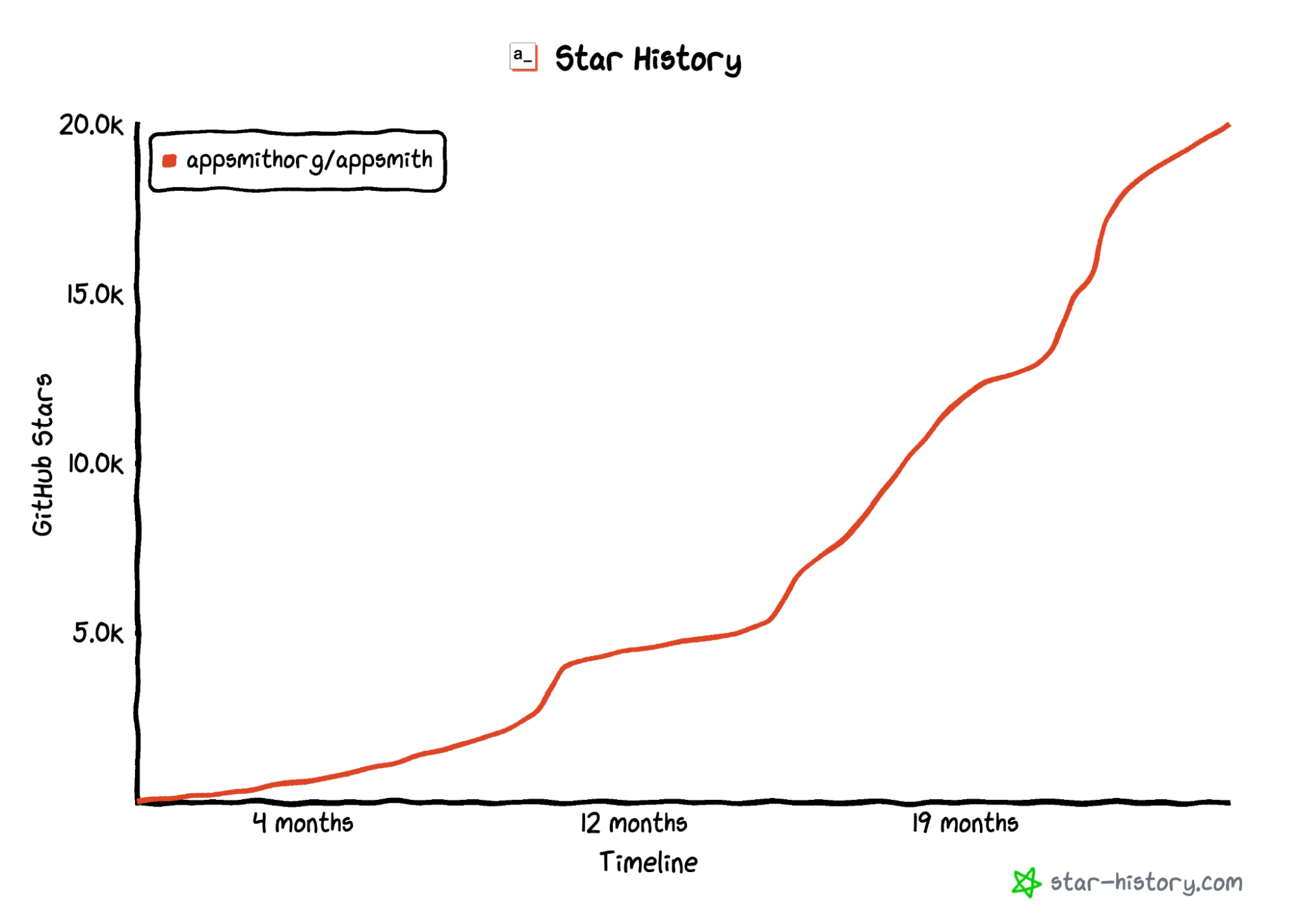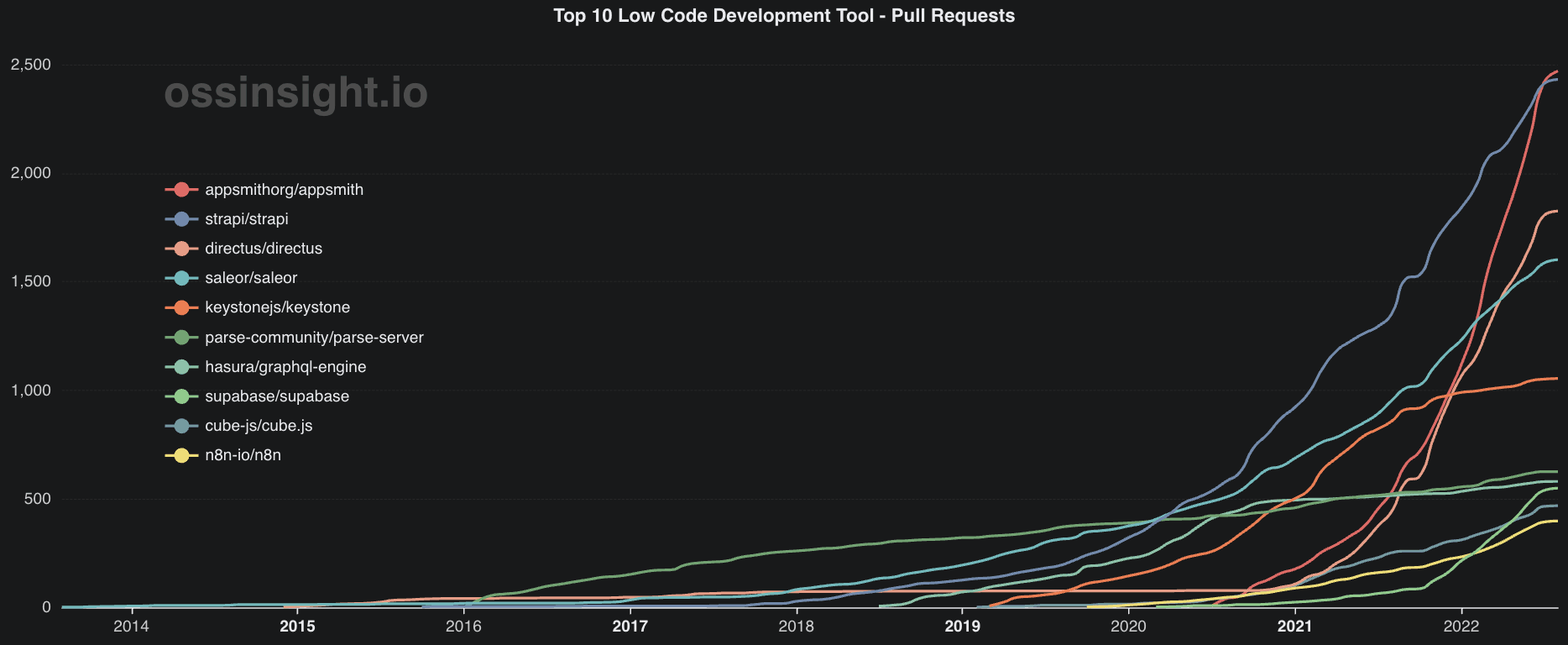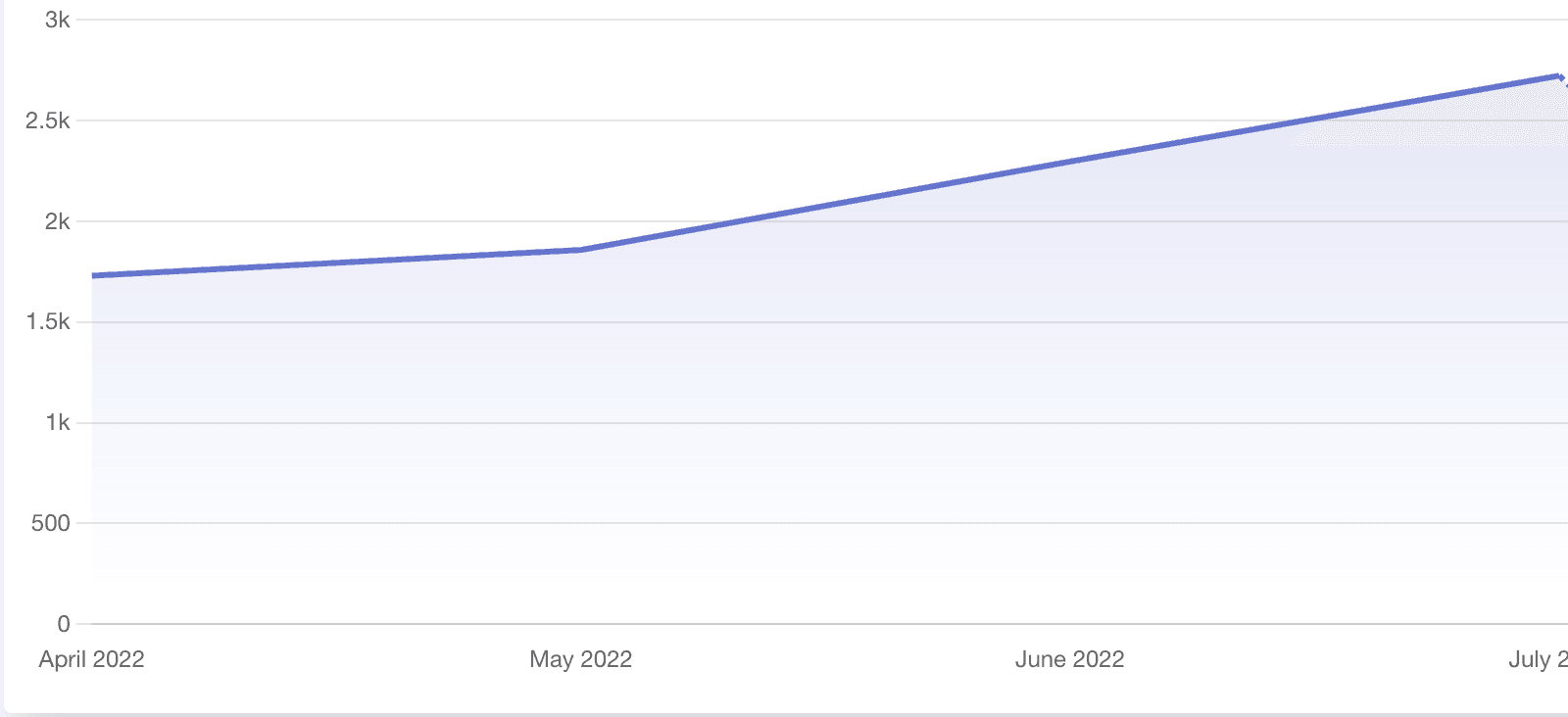Appsmith hits 20000 Stars. How did we get here?


Day before yesterday we reached 20,000 Stars on Github.
We’re excited by this number because of what it represents. 20,000 Stars is a milestone that puts us in the company of other exciting open source projects that we all use and love.
It’s been a steady rise. Since our launching on Github in mid 2020, it’s taken us a little over 2 years to reach this milestone. In June last year, we wrote about our learnings while hitting 4500 Stars. Since then, we’ve gotten a 4.4x jump since.

How did we get here?
There’s a big debate in the open source community around the value of Github Stars. One Stack Overflow question laments "GitHub Stars" is a very useful metric. But for *what*?
We look at Github Stars as an informal measure of popularity of an open source project. And so while there might exist popular projects with low Stars, projects with high Stars more often than not command some mindshare.
So while we keep an eye on this metric, it’s definitely not something we lose sleep over.
Our philosophy has been to focus on things that add value to developers worldwide and focus methodically initiatives that further that cause. And so here are the things we’ve been doing (with pride)
Committing (Code)
We’ve been shipping. A LOT. And it's getting noticed. The folks at OSSInsight have been tracking and ranking various open source projects. We've submitted the highest number of pull requests among all low code development platforms. What makes this more interesting (and exciting) is that the definition of a low code platform according to OSSInsight is quite broad, including companies like Hasura, Supabase, Strapi.
And Appsmith continues to lead this chart month over month.

Our users are noticing this too.
In addition to new users discovering us from word of mouth, we’re also seeing a lot of existing users returning back to Appsmith citing how much better the platform has gotten since they last tried it.
Even though our primary aim has been to educate our users about new features releases, bug fixes and helping users create bettet software, we started noticing that a lot of developer media began picking up our updates. This was very exciting to observe. Devops.com covered our version control, New Stack highlighted our OSS approach, JAXenter covered our JS Editor launch, and SD Times featured us not once, but twice as their Project of the Week (the second time was probably due to our fundraise).
Retention over Acquisition
We made a conscious call in 2020 to focus on retention and user education over user acquisition. The good folks at Threado covered our early community-building efforts some time back.
We believed as long as we served users via solving bugs, prioritizing features they asked for, and making ample content to help people get the most out of the platform, word of mouth would take care of acquisition.
We launched our discourse community to create a Q&A type knowledgebase. In addition to helping our existing users and reducing load on our support team, it’s also becoming a growing source of organic traffic and bringing in new users (plausible data only from Apr 22)

To increase retention, we also created Sample Apps, and Templates to help users understand product features better. While Templates enable a user to see a fully functional application that’s ready to be forked (like a dashboard or admin panel), Sample Apps have a narrower scope to help users perform a specific functions like How to implement a Search / Filter functionality in a Table with MongoDB as a datasource. This is in addition to the videos and blogs we’ve been regularly publishing around use-cases and investing in robust documentation. We’re slowly seeing the fruits of this from a new user acquisition perspective kick in because this type of content is also great for SEO.
Highlighting Self Hosting
One of the early calls we made was to ensure that we made it easy for people to self-host Appsmith because that's how a lot of our users preferred using the platform. This is also reflected in our outreach efforts; you might see us plugging in links to our Github repo often (more so than website). The self host option is also prominently featured on our website's “hero section”.
Communicating across channels: Feature Updates, Opinions and Engaging Developers
We've been actively answering questions and sharing our feature releases on Reddit, Twitter, HackerNews and community forums of our integration partners. None of these channels individually bring a massive spike to traffic, but instead send a steady stream of consistent traffic to us every month and brings in a lot of new users to our Github repo. Like our July updates which is being received well from the Reddit community.
Word of Mouth
While our team continues to actively monitor and post our opinions on these platforms, increasingly we’ve started noticing that our users have started talking about us. For example, user comments on HackerNews like these make our day. All in, across Github and our website, 3rd party forums are increasingly contributing anywhere from 4-6K unique hits a month across our websites and Github.
A lot of our users are also writers, empowered by platforms like Medium or Dev.to or Hashnode and many of them have started featuring us in tutorials or listicles. This has lead to a massive spike in traffic, and my hunch is increasingly becoming a big contributor to our star growth.
Podcasts
For awareness, we had to be surgical. Instead of spending effort on SEO or ads, we decided to go after podcasts. Why? Laser focused target audience that resonates with the problem. Check. Organic backlinks. Check. Ample time to go deep into product, technology and how/why we’re building. Check. People who know what they’re talking about (our founders basically). Check. Till date we’ve recorded 15 podcasts (with 11 of them live) with an estimated cumulative 100K listens. All this in less than a 6 months. Check out Nikhil on JAMStack Radio or Arpit on Hanselminutes.
Github Juice
Github is possibly the last true organic platform. We’ve benefitted immensely from Github’s organic traffic. We’re not quite sure how Github’s “trending” algorithm works, but we’ve been consistently been “trending” in a bunch of sub-topics like JavaScript, TypeScript, Projects from India. But this often ends up becoming a domino effect, where because we’ve been doing a lot of the things above, there are people who discover us and star us, which in turn makes us trend, bringing in further Stars.
As a parting note, this is just the start. And we can’t wait to see what the future holds and we’ve got so many exciting features we’re working on (and yes bug fixes too). We’ll keep executing and serving our users. Do try out Appsmith incase you haven’t already or share it with developers in your team. Want to get more involved? Maybe contribute to the project or better still, join us if you want to be a part of an organization that is building something meaningful for developers worldwide.
Related Blog Posts


